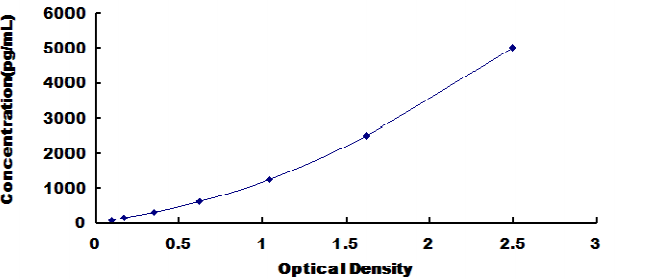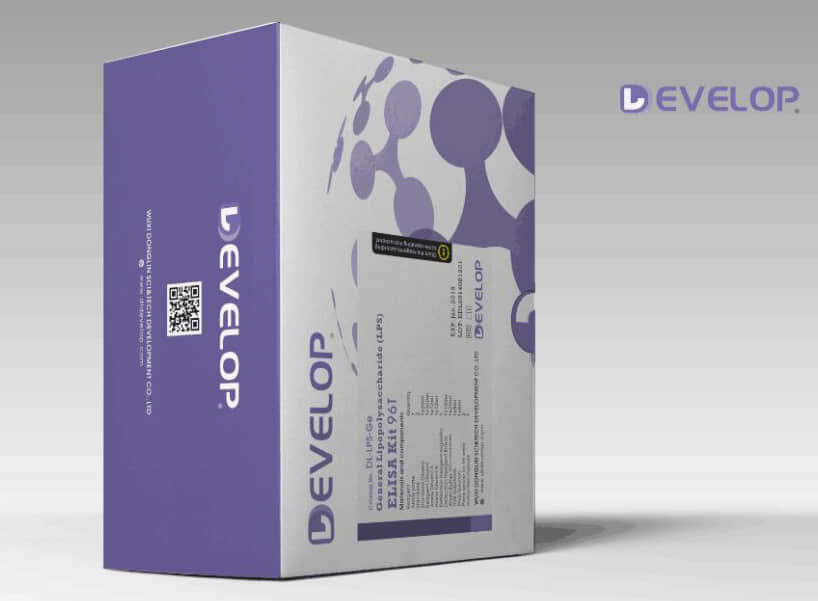Human TRNA Methyltransferase 61B (TRMT61B) ELISA Kit


two product lines: Traditional ELISA Kit and Ready-to-Use ELISA Kit.


Other names:
Function: Methyltransferase that catalyzes the formation of N1-methyladenine at position 58 (m1A58) in various tRNAs in mitochondrion, including tRNA(Leu) (deciphering codons UUA or UUG), tRNA(Lys) and tRNA(Ser) (deciphering codons UCA, UCU, UCG or UCC). Catalyzes the formation of 1-methyladenosine at position 947 of mitochondrial 16S ribosomal RNA and this modification is most likely important for mitoribosomal structure and function. In addition to tRNA N1-methyltransferase activity, also acts as a mRNA N1-methyltransferase by mediating methylation of adenosine residues at the N1position of MT-ND5 mRNA, leading to interfere with mitochondrial translation.
Sequence:
50 MLMAWCRGPV LLCLRQGLGT NSFLHGLGQE PFEGARSLCC RSSPRDLRDG 100 EREHEAAQRK APGAESCPSL PLSISDIGTG CLSSLENLRL PTLREESSPR 150 ELEDSSGDQG RCGPTHQGSE DPSMLSQAQS ATEVEERHVS PSCSTSRERP 200 FQAGELILAE TGEGETKFKK LFRLNNFGLL NSNWGAVPFG KIVGKFPGQI 250 LRSSFGKQYM LRRPALEDYV VLMKRGTAIT FPKDINMILS MMDINPGDTV 300 LEAGSGSGGM SLFLSKAVGS QGRVISFEVR KDHHDLAKKN YKHWRDSWKL 350 SHVEEWPDNV DFIHKDISGA TEDIKSLTFD AVALDMLNPH VTLPVFYPHL 400 KHGGVCAVYV VNITQVIELL DGIRTCELAL SCEKISEVIV RDWLVCLAKQ 450 KNGILAQKVE SKINTDVQLD SQEKIGVKGE LFQEDDHEES HSDFPYGSFP 470 YVARPVHWQP GHTAFLVKLR KVKPQLN
INTENDED USE
The kit is a sandwich enzyme immunoassay for the in vitro quantitative measurement of TRMT61B in human serum, plasma, tissue homogenates, cell lysates, cell culture supernates or other biological fluids.
DETECTION RANGE
78.1-5000pg/mL. The standard curve concentrations used for the ELISA’s were 5000pg/mL, 2500pg/mL, 1250pg/mL, 625pg/mL, 312pg/mL, 156pg/mL, 78.1pg/mL.
SENSITIVITY
The minimum detectable dose of TRMT61B is typically less than 33.3pg/mL.
The sensitivity of this assay, or Lower Limit of Detection (LLD) was defined as the lowest protein concentration that could be differentiated from zero. It was determined by adding two standard deviations to the mean optical density value of twenty zero standard replicates and calculating the corresponding concentration.
SPECIFICITY
This assay has high sensitivity and excellent specificity for detection of TRMT61B.
No significant cross-reactivity or interference between TRMT61B and analogues was observed.
You can reference link of the kit as following
https://dldevelop.com/Research-reagent/dl-trmt61b-hu.html
https://www.dldevelop.com/uploadfile/data/DL-TRMT61B-Hu.pdf
Introduction
| Item | Standard | Test | |
| Description |
The kit is a sandwich enzyme immunoassay for the in vitro quantitative measurement of TRMT61B in human serum, plasma, tissue homogenates, cell lysates, cell culture supernates or other biological fluids. |
Conform | |
| Identification | Colorimetric | Positive | |
| Composition | Traditional ELISA Kit | Ready-to-Use ELISA KIT | Conform |
| Pre-coated, ready to use 96-well strip plate 1 | Pre-coated, ready to use 96-well strip plate 1 | ||
| Plate sealer for 96 wells 2 | Plate sealer for 96 wells 2 | ||
| Standard 2 | Standard 2 | ||
| Diluents buffer 1×45mL | Standard Diluent 1×20mL | ||
| Detection Reagent A 1×120μL | Detection Solution A 1×12mL | ||
| Detection Reagent B 1×120μL | Detection Solution B 1×12mL | ||
| TMB Substrate 1×9mL | TMB Substrate 1×9mL | ||
| Stop Solution 1×6mL | Stop Solution 1×6mL | ||
| Wash Buffer (30 × concentrate) 1×20mL | Wash Buffer (30 × concentrate) 1×20mL | ||
| Instruction manual 1 | Instruction manual 1 | ||
Test principle
The microtiter plate provided in this kit has been pre-coated with an antibody specific to the index. Standards or samples are then added to the appropriate microtiter plate wells with a biotin-conjugated antibody preparation specific to the index. Next, Avidin conjugated to Horseradish Peroxidase (HRP) is added to each microplate well and incubated. After TMB substrate solution is added, only those wells that contain the index, biotin-conjugated antibody and enzyme-conjugated Avidin will exhibit a change in color. The enzyme-substrate reaction is terminated by the addition of sulphuric acid solution and the color change is measured spectrophotometrically at a wavelength of 450nm ± 10nm. The concentration of the index in the samples is then determined by comparing the O.D. of the samples to the standard curve.
Recovery
Matrices listed below were spiked with certain level of recombinant TRMT61B and the recovery rates were calculated by comparing the measured value to the expected amount of the index in samples.
| Matrix | Recovery range (%) | Average(%) |
| serum(n=5) | 81-93 | 86 |
| EDTA plasma(n=5) | 80-97 | 88 |
| heparin plasma(n=5) | 90-101 | 95 |
Linearity
The linearity of the kit was assayed by testing samples spiked with appropriate concentration of the index and their serial dilutions. The results were demonstrated by the percentage of calculated concentration to the expected.
| Sample | 1:2 | 1:4 | 1:8 | 1:16 |
| serum(n=5) | 82-96% | 83-98% | 81-99% | 93-101% |
| EDTA plasma(n=5) | 88-101% | 86-95% | 90-102% | 80-93% |
| heparin plasma(n=5) | 80-91% | 82-90% | 95-104% | 79-95% |
Precision
Intra-assay Precision (Precision within an assay): 3 samples with low, middle and high level the index were tested 20 times on one plate, respectively.
Inter-assay Precision (Precision between assays): 3 samples with low, middle and high level the index were tested on 3 different plates, 8 replicates in each plate.
CV(%) = SD/meanX100
Intra-Assay: CV<10%
Inter-Assay: CV<12%
Stability
The stability of ELISA kit is determined by the loss rate of activity. The loss rate of this kit is less than 5% within the expiration date under appropriate storage conditions.
Note:
To minimize unnecessary influences on the performance, operation procedures and lab conditions, especially room temperature, air humidity and incubator temperatures should be strictly regulated. It is also strongly suggested that the whole assay is performed by the same experimenter from the beginning to the end.
Assay procedure summary
1. Prepare all reagents, samples and standards;
2. Add 100µL standard or sample to each well. Incubate 2 hours at 37℃;
3. Aspirate and add 100µL prepared Detection Reagent A. Incubate 1 hour at 37℃;
4. Aspirate and wash 3 times;
5. Add 100µL prepared Detection Reagent B. Incubate 1 hour at 37℃;
6. Aspirate and wash 5 times;
7. Add 90µL Substrate Solution. Incubate 15-25 minutes at 37℃;
8. Add 50µL Stop Solution. Read at 450nm immediately.
Order or get a Quote
We will reply you within 24 hours!














